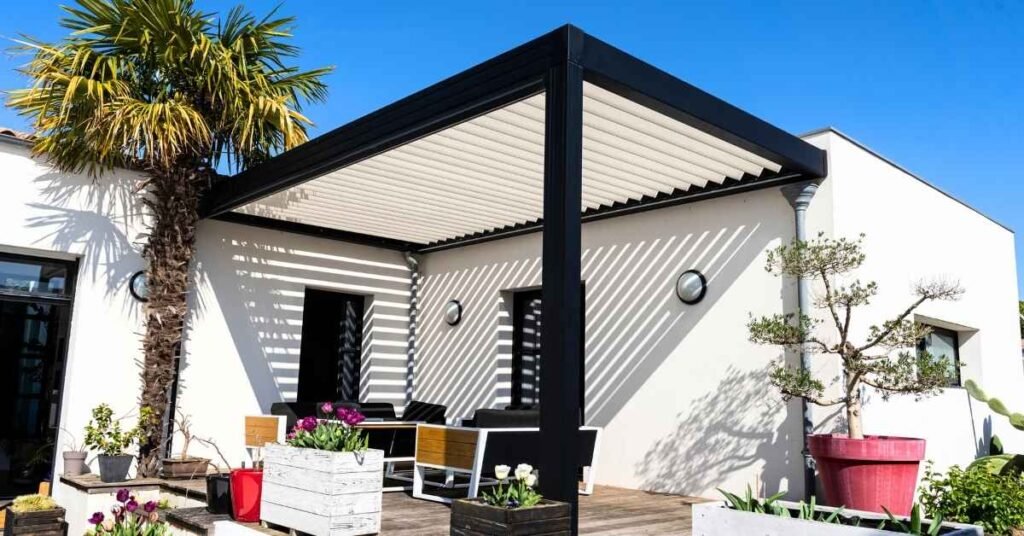Backyard Garden Shade Solutions: Keeping Cool in the Heat
Table of Contents
Introduction: The Importance of Shade in Your Garden
Shade plays a crucial role in garden design and plant health, influencing both the aesthetic appeal and functionality of your outdoor space. By providing protection from the harsh midday sun, shade helps regulate soil temperature and moisture levels, creating a more hospitable environment for certain plants. It can prevent soil erosion, reduce water evaporation, and mitigate the risk of heat stress on plants. Shade also enhances the diversity of plants you can grow, allowing shade-loving species to thrive and adding layers of texture and color to your garden.

Additionally, well-planned shaded areas offer a cool refuge for people, extending the usability of your outdoor space during hot weather. Incorporating shade into your garden design, whether through natural elements like trees and shrubs or structural features like pergolas and shade sails, not only enhances plant health but also contributes to a more comfortable and enjoyable garden experience.
Designing Shade Structures for Your Garden
Incorporating shade structures into your garden design can greatly enhance comfort and functionality, providing relief from the sun while adding aesthetic appeal. Two popular options are pergolas, awnings, and shade sails, each offering unique benefits.
Pergolas, Awnings, and Shade Sails
Pergolas are versatile structures consisting of a framework with open sides and a roof supported by columns. They can be partially covered with climbing plants or fabric, creating a dappled shade effect. Pergolas offer both functional shade and a stylish focal point, ideal for creating outdoor living spaces or garden walkways. Awnings, typically made of fabric or metal, extend from the side of a building or structure and provide adjustable shade.
They are perfect for covering patios or windows, reducing heat gain inside the home while offering immediate shade. Shade sails, crafted from durable, weather-resistant fabric, are suspended between anchor points to create a canopy of shade. They are flexible in design and can be configured in various shapes and angles, making them a modern and dynamic option for covering larger areas.
Choosing the Right Structure for Your Space
Selecting the appropriate shade structure depends on several factors, including the size and layout of your garden, the intended use of the shaded area, and your aesthetic preferences. Pergolas are ideal for creating defined outdoor rooms or pathways and can be customized with climbing plants for additional coverage. Awnings are best for adding shade to specific areas like patios or windows, providing immediate protection and often retractable options for flexibility.
Shade sails are excellent for larger spaces or areas with irregular shapes, offering a contemporary look with adjustable coverage. Consider the orientation of your garden, the amount of sun exposure, and your local climate when choosing a structure. Properly planned shade solutions not only enhance comfort but also contribute to a well-designed and functional garden space.
Planting Trees and Shrubs for Natural Shade
Incorporating trees and shrubs into your garden design provides natural shade and enhances the overall beauty of the space. Choosing the right plants for shade can transform your garden into a cooler, more inviting environment.
Best Shade Trees for Small Gardens
When space is limited, selecting compact, slow-growing shade trees is crucial. Trees like the Japanese Maple (*Acer palmatum*) are ideal for small gardens, offering a delicate canopy and vibrant fall color without overwhelming the space. Another excellent choice is the dogwood (*Cornus florida*), which provides dappled shade with its attractive spring blooms and manageable size. The redbud (*Cercis canadensis*) is also well-suited for smaller gardens, featuring heart-shaped leaves and striking pink flowers. These trees provide ample shade while maintaining a proportionate scale relative to the garden size, ensuring they don’t overcrowd the space.
Creating Shade with Tall Shrubs and Climbing Plants
Tall shrubs and climbing plants offer a flexible approach to shading in both small and large gardens. Tall shrubs such as the Loropetalum (*Loropetalum chinense*) or the Holly (*Ilex spp.*) can serve as effective screens, providing privacy and reducing sun exposure. These shrubs can be strategically planted to block harsh sunlight while adding year-round greenery. Climbing plants, like the clematis (*Clematis spp.*) or wisteria (*Wisteria sinensis*), can be grown on trellises, arbors, or pergolas to create vertical layers of shade. They not only offer cooling shade but also add visual interest with their beautiful flowers and foliage.
By carefully selecting and positioning trees, shrubs, and climbing plants, you can create a natural shade solution that enhances your garden’s comfort and aesthetics. These plantings offer ecological benefits and a sustainable way to manage sunlight and temperature, ensuring your garden remains a refreshing retreat.
DIY Shade Projects for Budget-Friendly Solutions
Creating shade in your garden doesn’t have to be costly or complicated. With a few DIY projects, you can achieve effective and stylish shade solutions on a budget. Two practical approaches are building a simple shade structure and using outdoor fabrics and curtains.

Building a Simple Shade Structure
One of the most straightforward DIY shade solutions is constructing a basic shade structure. A pergola or a simple frame with a canopy can be built using affordable materials like wood or PVC pipes. Start by setting up vertical posts and securing them with concrete or ground anchors. Then, attach horizontal beams to create a frame. For the roofing, use weather-resistant fabric such as canvas or shade cloth, which can be stretched across the top and secured with staples or zip ties. This basic structure provides shade and can be customized with additional features like climbing plants or string lights for added charm. This project not only saves money but also allows for creative flexibility in design.
Using Outdoor Fabrics and Curtains
Outdoor fabrics and curtains offer a cost-effective and versatile way to add shade to your garden. You can create a shaded area by installing a tension rod or a simple wire across a patio or between two posts and then draping outdoor fabric or curtains over it. Choose materials specifically designed for outdoor use to ensure durability and resistance to weather elements. This approach is particularly useful for covering smaller areas or providing shade on existing structures like decks or balconies. Outdoor curtains can also be attached to a DIY frame or pergola to create a semi-enclosed, shaded space. This method is not only budget-friendly but also easily adjustable, allowing you to open or close the curtains as needed.
These DIY shade projects offer practical, affordable solutions for creating comfortable, shaded spaces in your garden, enhancing your outdoor enjoyment without breaking the bank.
Maintaining and Caring for Shade Structures
Proper maintenance and care are essential to ensure the longevity and effectiveness of your shade structures. Regular upkeep and protection from weather damage will help keep your shade solutions functional and aesthetically pleasing.
Regular Maintenance Tips
To extend the life of your shade structure, routine maintenance is key. For wooden structures, inspect for signs of rot, insect damage, or loose fittings. Regularly clean and seal the wood with a suitable outdoor sealant to protect against moisture and UV damage. Metal structures should be checked for rust or corrosion; applying a rust-inhibiting primer and paint can prevent deterioration. Fabric canopies should be cleaned periodically to remove dirt and stains. Follow the manufacturer’s instructions for washing or spot cleaning to avoid damage. Ensure that all fastenings, such as screws and bolts, are tight, and replace any damaged components promptly. If your shade structure includes moving parts or retractable elements, lubricate them as needed to maintain smooth operation.
Protecting Structures from Weather Damage
Weather can take a toll on shade structures, so taking preventive measures is crucial. For fabric canopies, consider using a protective cover or removing the fabric during extreme weather conditions like heavy rain, snow, or strong winds. This helps prevent wear and tear and reduces the risk of mold and mildew. For wooden and metal structures, applying weather-resistant treatments or coatings can help safeguard against water damage and UV rays. During harsh weather, such as storms or high winds, secure the structure with additional supports or anchors to prevent instability. Regularly check for any signs of damage after severe weather and address issues promptly to avoid further deterioration.
By adhering to these maintenance tips and protective measures, you can ensure that your shade structures remain in excellent condition, providing lasting comfort and functionality for your outdoor space.
Conclusion: Enjoying a Cool and Comfortable Garden
Creating a cool and comfortable garden involves thoughtful planning and regular maintenance, ensuring a relaxing and enjoyable outdoor space. By integrating effective shade solutions like trees, shrubs, and DIY structures, you can manage sunlight and temperature, making your garden a pleasant retreat even on the hottest days. Implementing shade structures such as pergolas, awnings, and shade sails, along with natural shading from trees and climbing plants, enhances both the aesthetics and functionality of your garden.
Regular care of these elements—through cleaning, inspection, and weather protection—will prolong their life and effectiveness. Embracing these strategies not only improves your garden’s comfort but also adds to its beauty and usability. With the right approach, your garden can become a cool sanctuary, offering a perfect escape for relaxation and enjoyment year-round.
